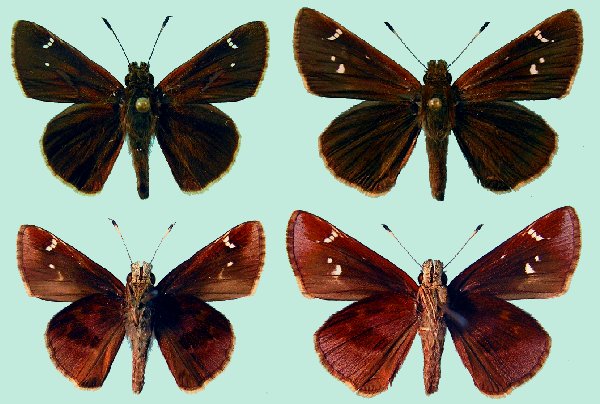Lerema accius

Photo Life History: Lerema accius
Habitat: Urban-Suburban (disturbed areas of South Florida); Valley Lakes & Rivers (Texas and Virginia)
Host Plants: Sorghum halepense; Phalaris arundinacea
Suitable Lab Host Plants: Bromus inermus, (Any wide-bladed weedy grass works fine to feed this larva in the lab.)
Caring for Live Female Butterflies: Nectaring techniques
Methods of Female Oviposition: Portable Cages; Open Screen Cages.
How to Find Eggs: Look on grass blades of host plant.
How to Hatch Eggs: Consolidate eggs into one container.
How to Find Caterpillars in the Field: Finding fifth instar caterpillars is the most effective and practical strategy for rearing this skipper. Look for unique and conspicuous skipper nests; especially their unique zig zag chew marks.
Caterpillar setups: Open terrariums; Open Bucket. (Click here to watch a video demonstrating how to place a hatchling first instar skipper caterpillar on the tip of wide bladed grasses.)
Larva to Pupa: Fifth instar larva will silk the grass blade and pupate right on the leaf. The greenish color of the pupa does make it conspicuous to a point.
How to Find Pupae in the Field: Again, fifth instar larva will silk the grass blade and pupate right on the leaf.
Number of Broods per Year: Multiple.
Overwintering Stage:
Overwintering Strategies:
Post-Hibernation Strategies:
Avoiding Diapause Techniques:
Disease Prevention: Change out host plant and remove frass every four to five days.
Emergence: Emergence Container
Field Notes: Found conspicuous skipper nests along the shore of Lake Lewisville, Denton County, Texas; Bull Run, Fairfax, Fairfax County, Virginia; and along disturbed areas of Florida City, Miami-Dade County, Florida. The clouded skipper is one of the more conspicuous hesperine skippers in the midwestern and eastern U.S. Finding their larval shelters usually is not too difficult on tall bladed grasses where the butterfly is common.

